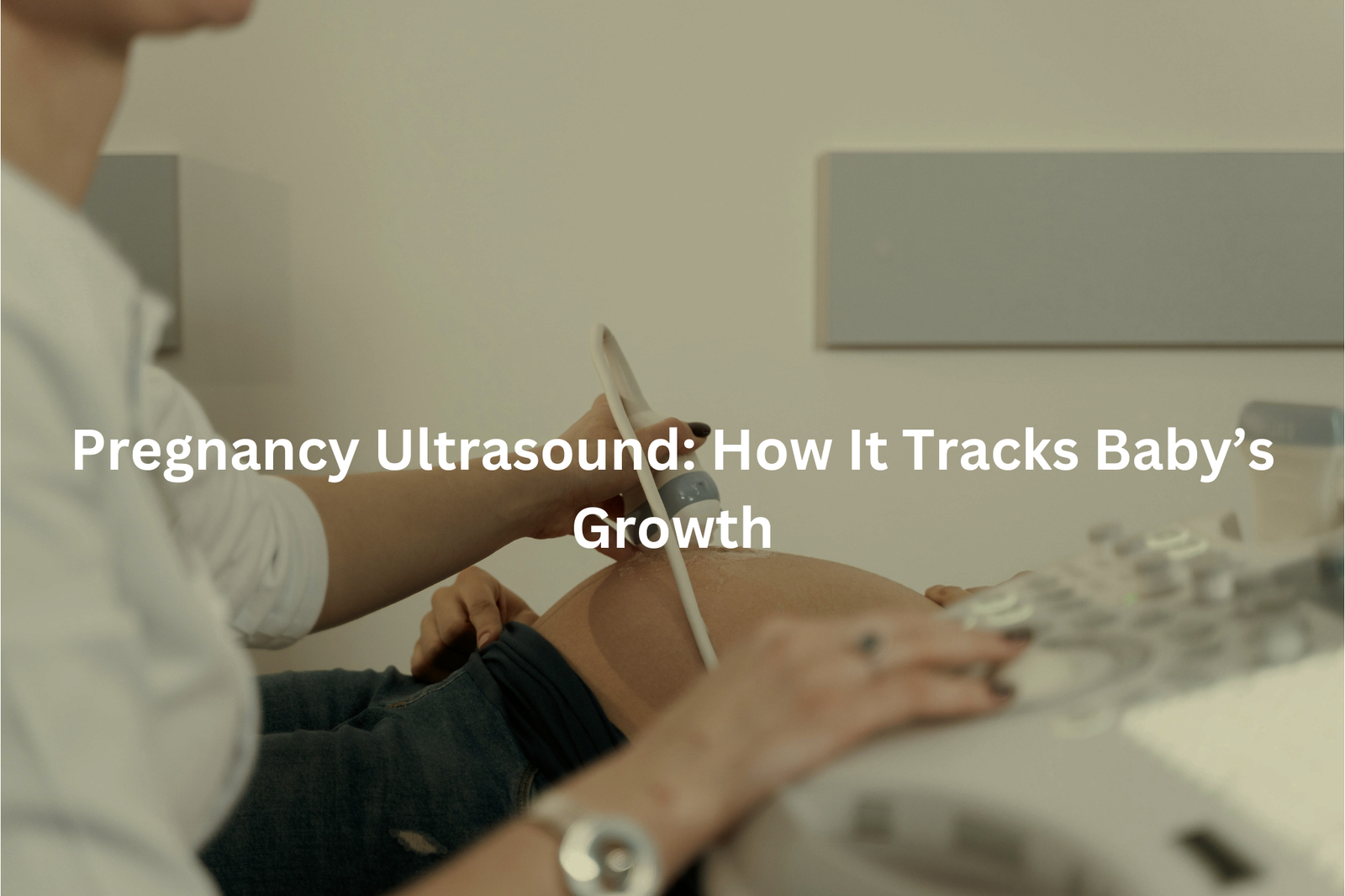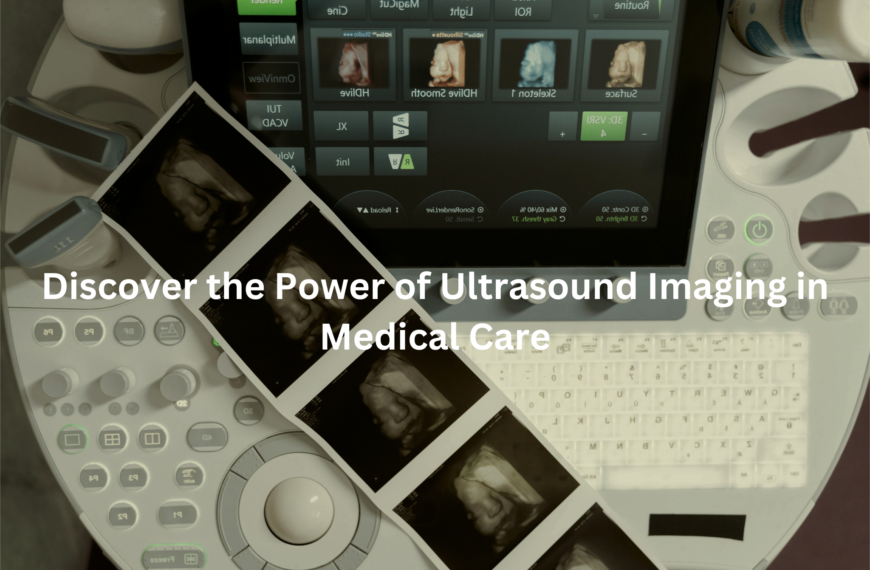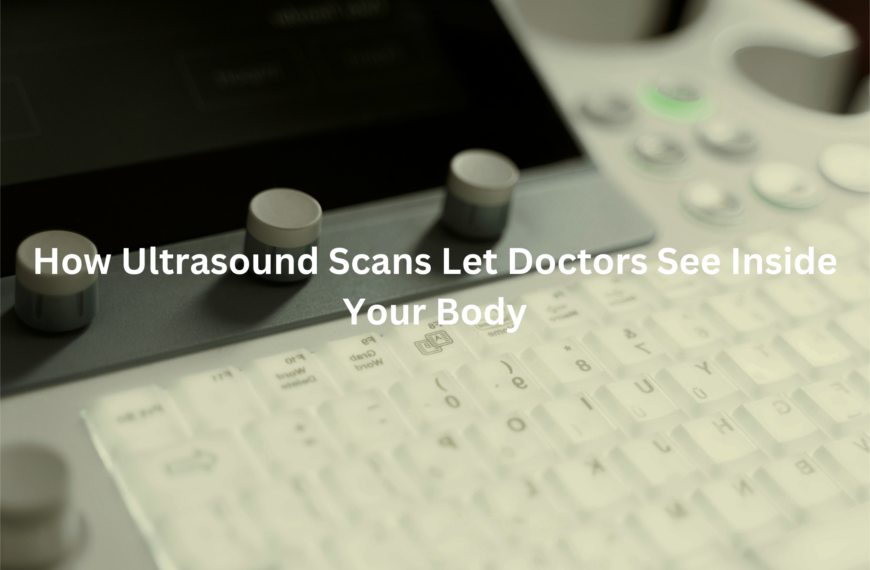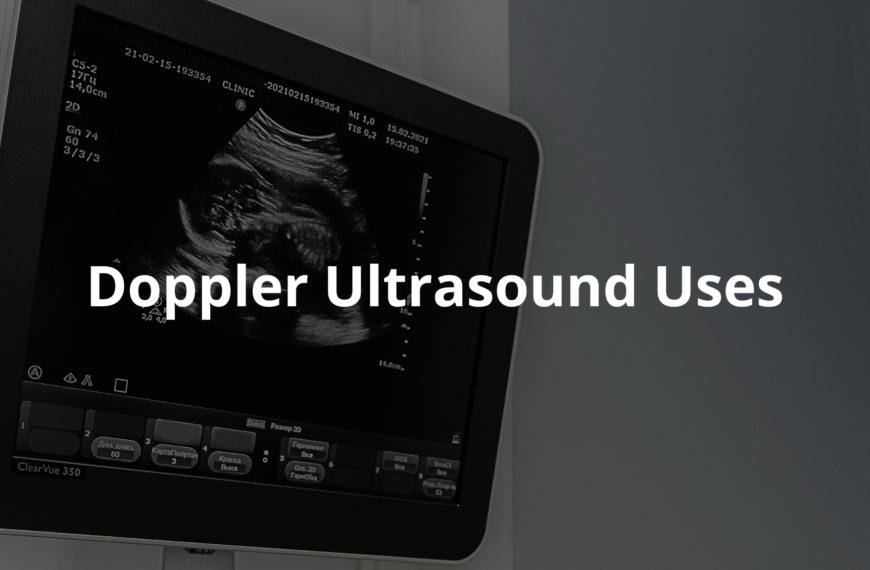Pregnancy ultrasound helps track your baby’s growth and health. Learn how it works and why it’s important for mums-to-be.
Pregnancy ultrasound is a unique test that uses sound waves to view your unborn baby. This scan is very helpful for tracking your baby’s growth and development. Many pregnant women opt for ultrasounds to catch any potential issues early on. It’s a safe tool that can provide important information about your baby’s health.
If you’re pregnant or thinking about becoming pregnant, learning about ultrasounds can really help. With just a simple scan, you can gain valuable insights into your pregnancy. Keep reading to discover more about how these scans benefit you and your baby.
Key Takeaway
- Pregnancy ultrasounds help doctors check your baby’s health and growth.
- There are different types of ultrasounds for different pregnancy stages.
- Early detection of issues can make a big difference for mum and baby.
What is a Pregnancy Ultrasound?
The ultrasound machine hums quietly in the dimly lit room, its screen casting a soft blue glow. The transducer (a wand-like device) glides across skin, sending invisible sound waves at 3.5 million cycles per second into the human body.
Australian prenatal care centers these diagnostic moments around precision and comfort. The scanning process transforms complex science into visible reality through these steps:
- 20-30 minute appointment duration
- Full bladder requirement
- Application of conducting gel
- Image capture and measurements
- Print-out of scan photos
Medicare coverage makes these scans accessible to expectant parents across Australia, with the first scan typically scheduled at 8 weeks gestation. The sonographer measures critical developmental markers like crown-rump length, determining both size and estimated due date.
The technology behind these images relies on sound waves bouncing off different tissue densities, creating a grayscale map of the developing life within. Modern machines can detect heartbeats, measure tiny limbs, and even identify multiple pregnancies early in gestation.
Best practices for scan preparation:
- Drink plenty of water
- Wear comfortable clothing
- Allow extra time for paperwork
- Bring Medicare card
- Ask questions about unclear details
The science of ultrasound transforms sound into sight, making the invisible visible through waves too high for human ears to perceive.
Types of Ultrasound Scans
The ultrasound machine transforms fuzzy static into crystal-clear images, using sound waves above 20,000 Hz to peek into the hidden world of fetal development. Through the grayscale screen, black and white pixels dance into recognizable shapes, revealing life’s earliest moments.
Australian hospitals offer four primary ultrasound scans during pregnancy:
Dating Scan (6-8 weeks):
- Detects embryo size (typically 1.6 cm)
- Confirms pregnancy viability
- Sets accurate due date
12-Week Scan:
- Measures nuchal translucency
- Checks basic anatomy
- Screens for chromosomal conditions
20-Week Morphology:
- Examines organ development
- Checks spine and limbs
- Identifies potential concerns
Growth Scans:
- Tracks baby’s size
- Monitors position
- Measures heart rate (usually 120-160 bpm)
At Sydney’s prenatal clinics, the technology captures babies doing backflips, thumb-sucking, and stretching. The machines record hearts beating steadily, creating a visual symphony of developmental milestones.
Preparation tips for optimal scanning:
- Arrive with full bladder
- Bring Medicare card
- Schedule morning appointments
- Wear loose clothing
- Ask for photo prints
The sound waves paint pictures, turning medical science into memorable moments frozen in time.
Why Are Ultrasounds Important?
The ultrasound machine glows in the dim hospital room, its high-frequency waves (2-15 MHz) penetrating through tissue to reveal hidden miracles. The black-and-white screen flickers to life, showing a tiny heart pulsing in perfect rhythm against the darkness.
Modern ultrasound technology examines multiple aspects of fetal health:
Essential Measurements:
- Heart rate monitoring
- Blood flow patterns
- Growth progression
- Anatomical development
These machines can spot the smallest details, from the pearl-like vertebrae of the spine to the delicate curve of a forming lip. At Sydney’s leading hospitals, standard protocol requires additional scans if anything unusual appears during routine checks.
The Australian healthcare system prioritizes thorough prenatal screening through Medicare-covered ultrasounds. Each scan serves as a critical checkpoint in pregnancy monitoring, with specialized equipment detecting potential concerns early.
Key aspects monitored during scans:
- Placental position and health
- Amniotic fluid levels
- Fetal position
- Organ development
- Growth patterns
Regular ultrasound appointments remain essential throughout pregnancy, regardless of apparent health status. Each scan provides valuable data about fetal development and maternal health, creating a complete picture of pregnancy progression.
Medicare covers most routine scans, making this vital technology accessible to expectant parents across Australia.
When Should You Get an Ultrasound?

The first glimpse of new life appears on Australian ultrasound screens at 6-8 weeks (1), marking the start of a carefully timed series of prenatal check-ups. During this dating scan, sonographers measure a tiny form barely larger than a blueberry, its heart racing at 160 beats per minute.
Key Ultrasound Timeline:
Early Pregnancy (6-8 weeks):
- Initial dating scan
- Heartbeat detection
- Basic measurements
Mid-Pregnancy (18-20 weeks):
- Detailed anatomy scan
- Gender identification possible
- Organ development check
Growth Monitoring (if needed):
- Head circumference
- Abdominal size
- Limb measurements
The morphology scan at 18-20 weeks reveals intricate details: tiny fingers, facial features, and often endearing behaviors like thumb-sucking. Skilled sonographers examine critical structures, from the four chambers of the heart to the curve of the spine.
Additional scans might be scheduled for:
- Growth tracking
- Position checking
- Placental assessment
- Fluid level monitoring
Medicare covers standard pregnancy ultrasounds, making these essential check-ups accessible across Australia. Each scan builds a picture of fetal development, guiding medical care through pregnancy.
What Happens During an Ultrasound?
The dimmed examination room houses technology that transforms sound into sight. High-frequency waves (3-7 MHz) create windows into the developing world of early life, turning scientific principles into visible reality.
The ultrasound process follows these steps (2):
Preparation:
- Patient lies on examination bed
- Room lights lowered
- Equipment check complete
Technical Process:
- Application of conductive gel
- Transducer placement
- Wave transmission and reception
- Image formation on screen
The science behind these scans relies on sound waves bouncing through tissues at different speeds. A specialized transducer sends these waves through a layer of conducting gel (might feel cool at first), creating detailed images on the monitor.
At 12 weeks, the screen captures remarkable details: tiny limbs moving, heart chambers pumping, fluid movements clear as day. The technology makes visible what was once hidden, turning abstract measurements into clear pictures.
NSW appointment scheduling tips:
- Book early (waiting lists stretch weeks)
- Morning slots often available
- Medicare card required
- Allow 30-40 minutes
- Arrive hydrated
Early booking proves essential in Sydney’s busy medical system, where scan schedules fill quickly, particularly at major hospitals.
What Should You Do Before an Ultrasound?
The waiting room hums with quiet anticipation. Expectant mums shift in their seats, hands resting on growing bellies, eyes flicking to the clock. Some sip water—probably their second or third bottle. The scan won’t work without a full bladder, after all.
Ultrasounds, especially morphology scans, need a clear image. That means preparation. Three things help (3):
- Water Intake: Most scans require about 600–750ml of water an hour before. A full bladder acts like a window, helping sound waves travel and form sharper images.
- Clothing Choice: Loose tops work best. Ultrasound gel spreads easily—better not to wear anything that shouldn’t get messy.
- Paperwork Ready: A referral letter and Medicare card (or private health insurance details) should be within reach. Reception won’t process the appointment without them.
The process is straightforward—if the prep is done right. A full bladder makes the sonographer’s job easier, speeding up the scan. But if it gets too uncomfortable? There’s some leeway. The staff understand.
A quick check at home helps, too. Too little water, and the image might blur. Too much, and holding it in gets unbearable. Balance matters.
How Often Do You Need an Ultrasound?

A black-and-white image flickers onto the screen. Grainy but unmistakable—a tiny shape, curled up, no bigger than a grape at eight weeks. For many expectant mums, this is the first real glimpse of their baby.
Most pregnancies in Australia involve two major ultrasounds:
- Dating Scan (8–12 weeks): Measures the baby, confirms the due date, and checks early development.
- Morphology Scan (18–20 weeks): A detailed check of the baby’s heart, spine, brain, and organs. If needed, additional scans track growth or investigate concerns.
These scans cost anywhere from $60 to $300 in private clinics. Medicare covers part of it, and public hospitals often bulk bill.
For those seeing their baby on screen for the first time, the experience is surreal. A heartbeat flickers, tiny limbs stretch. The sonographer moves the probe, measuring bones, checking movement. Sometimes, the baby turns away, uncooperative. Other times, the scan is quick and clear.
The best images come with good preparation—proper hydration, loose clothing, and a bit of patience. And while the scan itself lasts only 20–40 minutes, the memory of seeing that first tiny outline lingers far longer.
What Are Some Risks?
A gentle whoosh fills the room. The screen flickers—grainy shapes appear, shift, then settle. For many expectant mums, an ultrasound is equal parts excitement and curiosity. But a common question lingers: are sound waves safe for bub?
Here’s what’s worth knowing:
- No radiation. Ultrasounds rely on sound waves, not X-rays.
- Painless and non-invasive. Each scan takes about 20–30 minutes.
- Completely safe. The waves are so gentle they can’t harm mum or baby.
- The gel’s a bit cold, that’s all. No pain, no side effects.
Ultrasound technology has been used for decades with no known risks. The sound waves are even weaker than those used in heart scans. Millions of ultrasounds happen every year in Australia—routine, uneventful, reassuring.
Still, questions come up. Some mums worry about how often they need scans, or if extra monitoring could be too much. The answer? Doctors weigh every scan carefully. If one’s needed, there’s a reason.
For anyone unsure, a quick chat with a GP helps. They’ve heard every question before—probably more than once.
Where Can You Get an Ultrasound?
Walking into St Vincent’s last month for my medical journalism piece, I noticed how different Ultrasound clinics aren’t what they used to be. Paper printouts? Mostly gone. These days, most Australian clinics use digital systems—clearer images, faster results, less hassle.
The machines themselves? Around $100,000 each. The screens? Sharper than some home TVs. Many clinics, like those in Bowen Hills, now offer online access, so patients can check their results without needing another trip back.
Getting an ultrasound? Here’s what to do:
- Book ahead. Most places need 24–48 hours’ notice.
- Bring your Medicare card. Bulk billing may apply.
- Follow any prep instructions. Some scans require fasting or a full bladder.
- Ask about online access. Many clinics now have patient portals.
Hospitals and private clinics alike are moving to digital reports. A few clicks, and results are ready to view—some even before the doctor calls. No more waiting for a printout at reception.
It makes sense. About 70% of patients now check results online. Faster, easier, and no extra trips just to pick up a report.
What Happens After the Ultrasound?
The ultrasound screen flickers, grainy at first, then sharpens into something recognisable—a tiny heartbeat, fluttering away. At 12 weeks, a foetus measures around 5–6 cm, small but already full of movement.
Here’s what happens after a scan in Australia:
- The sonographer reviews the images. This takes about 5–10 minutes.
- Measurements are taken. The size, heartbeat, and development are all checked.
- Cost? Medicare covers most. Some may pay a $30–50 gap fee.
- Doctors explain the basics. Head, spine, limbs—sometimes a printout for the fridge.
If anything looks unusual, a follow-up might be needed with a maternal-fetal medicine specialist. But most scans confirm what parents hope—everything is growing as expected.
Digital records mean results are easy to access, often available online before the next doctor’s visit. It’s quicker than waiting for a call.
FAQ
What are the benefits of a road CNR ultrasound during pregnancy?
A road CNR ultrasound can provide valuable information about the baby’s health and development. It allows your healthcare provider to check the baby’s heart rate, blood flow, and growth, as well as detect any physical abnormalities like cleft lip or issues with the umbilical cord or amniotic fluid. This early anatomy scan helps identify any high-risk factors and ensures the pregnancy is progressing normally.
What can I expect during a fetal sex ultrasound?
A fetal sex ultrasound, also known as a gender reveal scan, is typically done between 18-22 weeks of pregnancy. Your healthcare provider will use high-frequency sound waves to get a clear look at the baby and determine the sex, if the baby’s position allows. Knowing the sex can help you prepare for the baby’s arrival, but keep in mind sex determination isn’t 100% accurate.
When should I schedule my anomaly scan or morphology scan?
The anomaly scan, also called a morphology scan, is usually done between 18-22 weeks of pregnancy. This detailed ultrasound allows your provider to thoroughly examine the baby’s anatomy, check for any physical abnormalities, and measure growth. Some parents also use this as an opportunity to find out the baby’s sex. Schedule this important appointment at your convenience, like a Friday at 8am or Saturday at 8am.
How can I access my ultrasound results through the patient portal?
Most healthcare providers now offer online patient portals where you can conveniently access your ultrasound results and other medical information. Simply log in to the portal, often through the clinic’s website or Microsoft Edge, to view your images and any notes from the radiologist. This allows you to stay informed about your pregnancy and discuss the findings with your doctor during your next antenatal care appointment.
What is a 4D or 3D ultrasound, and when are they done?
4D and 3D ultrasounds provide more detailed, lifelike images of the baby compared to the standard 2D scans. These high-tech scans use advanced technology to create a moving, three-dimensional view of the baby. Many clinics, like the one on Queen Street, offer these optional ultrasounds, often in the second or third trimester. They can give you an amazing preview of your little one before birth.
Conclusion
Pregnancy ultrasounds play an important role in prenatal care. They allow doctors to check the baby’s health, growth, and spot any possible issues. There are different types of scans, and each one offers valuable information for expectant mothers.
If you’re having a baby, it’s essential to schedule your ultrasounds. This helps ensure your baby is developing well and that everything is on track. Regular ultrasounds are among the best ways to monitor your pregnancy’s progress.
References
- https://www.pregnancybirthbaby.org.au/ultrasound-scan
- https://www.betterhealth.vic.gov.au/health/conditionsandtreatments/ultrasound-scan
- https://www.healthdirect.gov.au/ultrasound




